Abstract
The understanding of clinico-epidemiological phenomena of tertian malaria has been the subject of controversy. The authors suggest a system of postulates which give a non-contradictory explanation of the phenomena of relapses and long incubation. The main idea is that the duration of exoerythrocytic development of Plasmodium vivax is a polymorphic characteristic controlled by a set of genes. According to these postulates sporozoites may be subdivided into two groups designated as tachysporozoites and bradysporozoites, responsible for early and late manifestations, respectively. The logical analysis of the system suggests that it does not contradict the experimental facts. Moreover, the theory of polymorphic sporozoites permits an explanation and quantification of interrelations between different phenomena. The authors stress that the variation of genes is much greater in natural populations of parasites than in individual isolates and strains and therefore that the features of strains do not fully reflect the features of populations. Classical laboratory experiments should be combined with epidemiological experiments which allow a study of the population as a whole. The methodology of experiments to be undertaken in further investigations of the long latency period is discussed.
Full text
PDF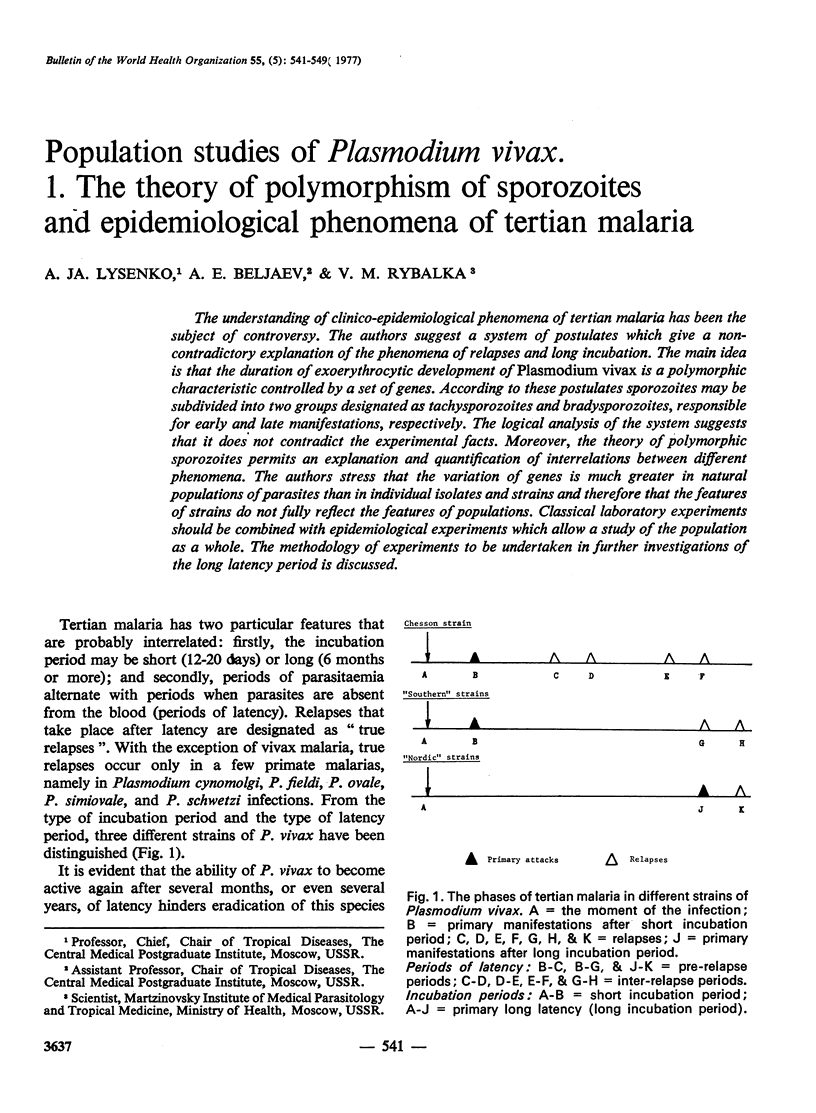
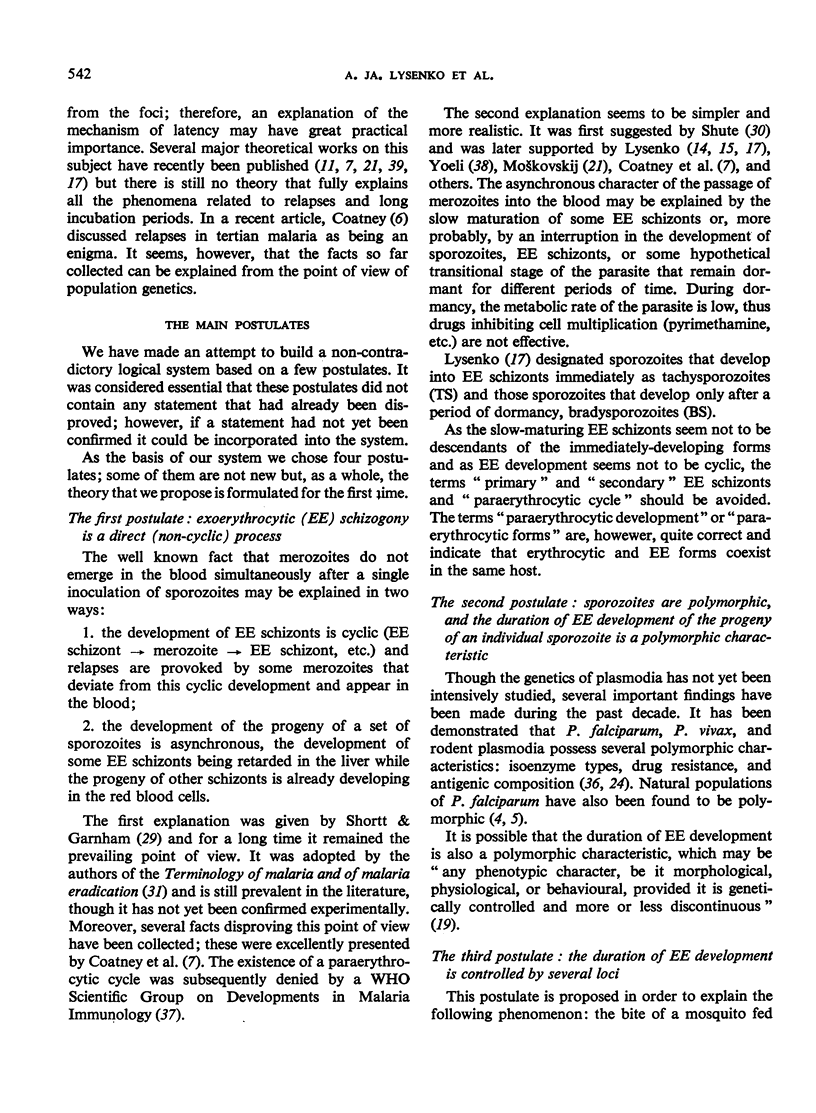
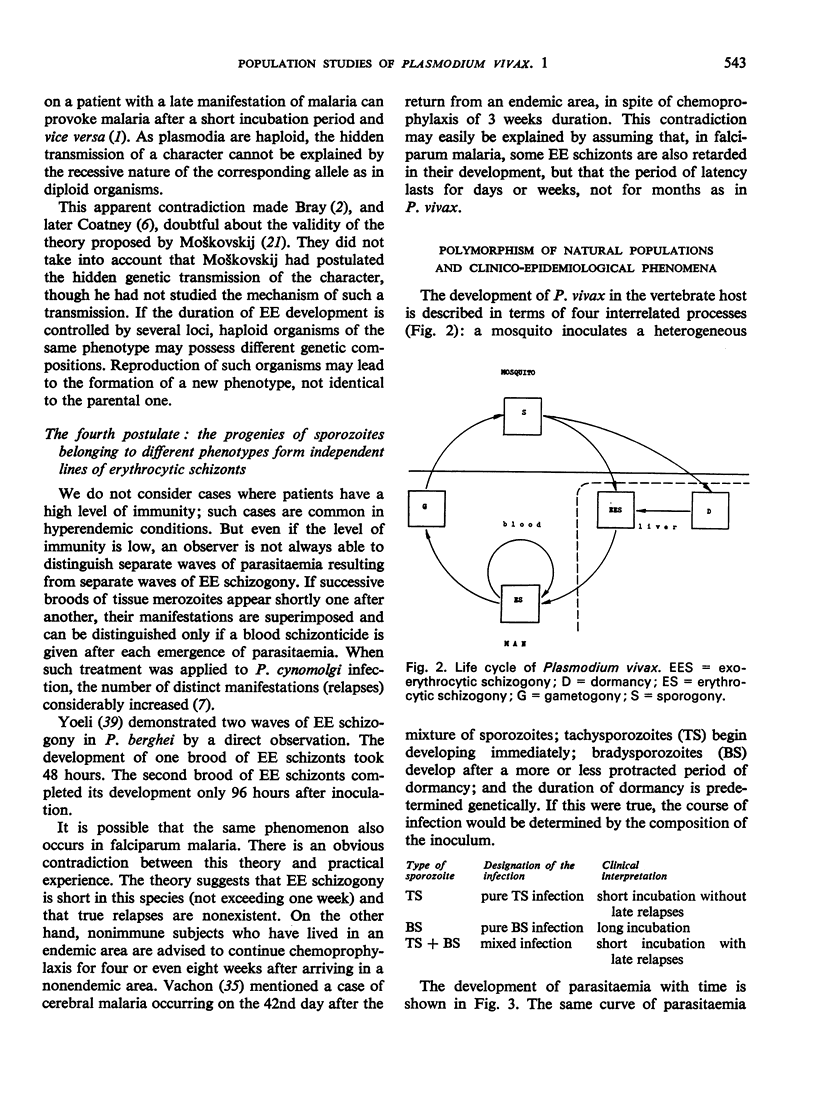
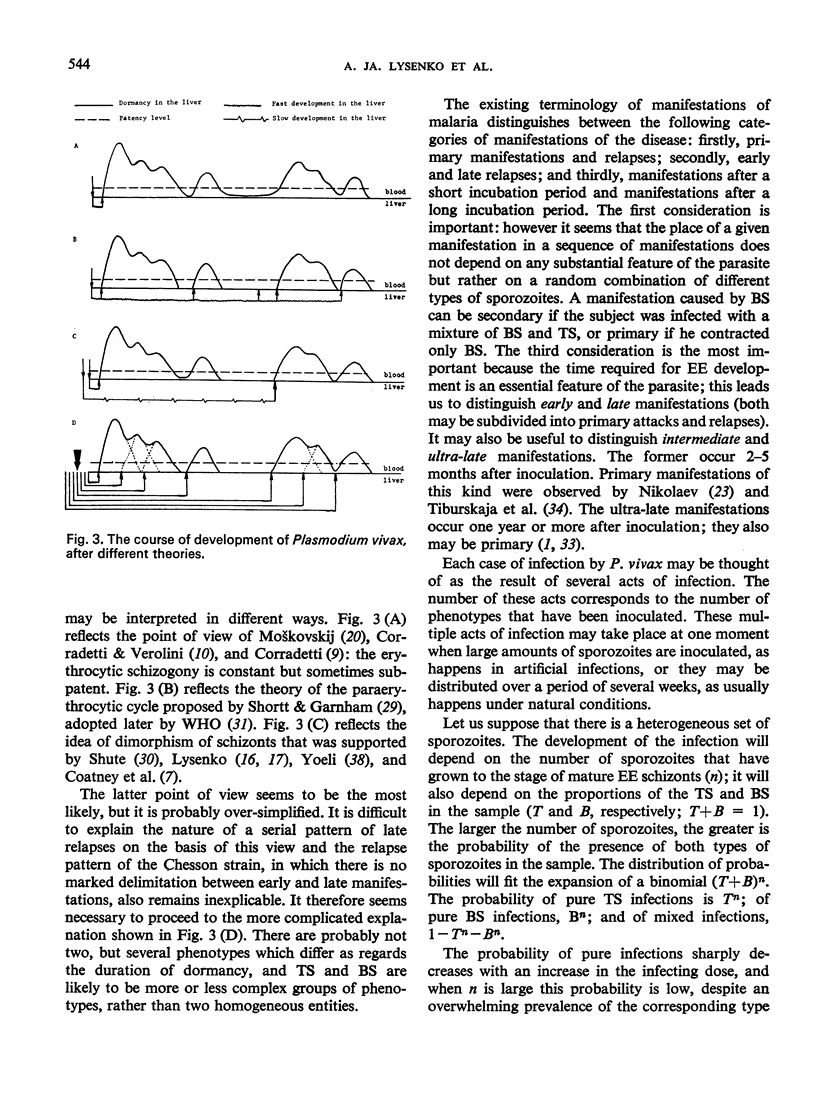
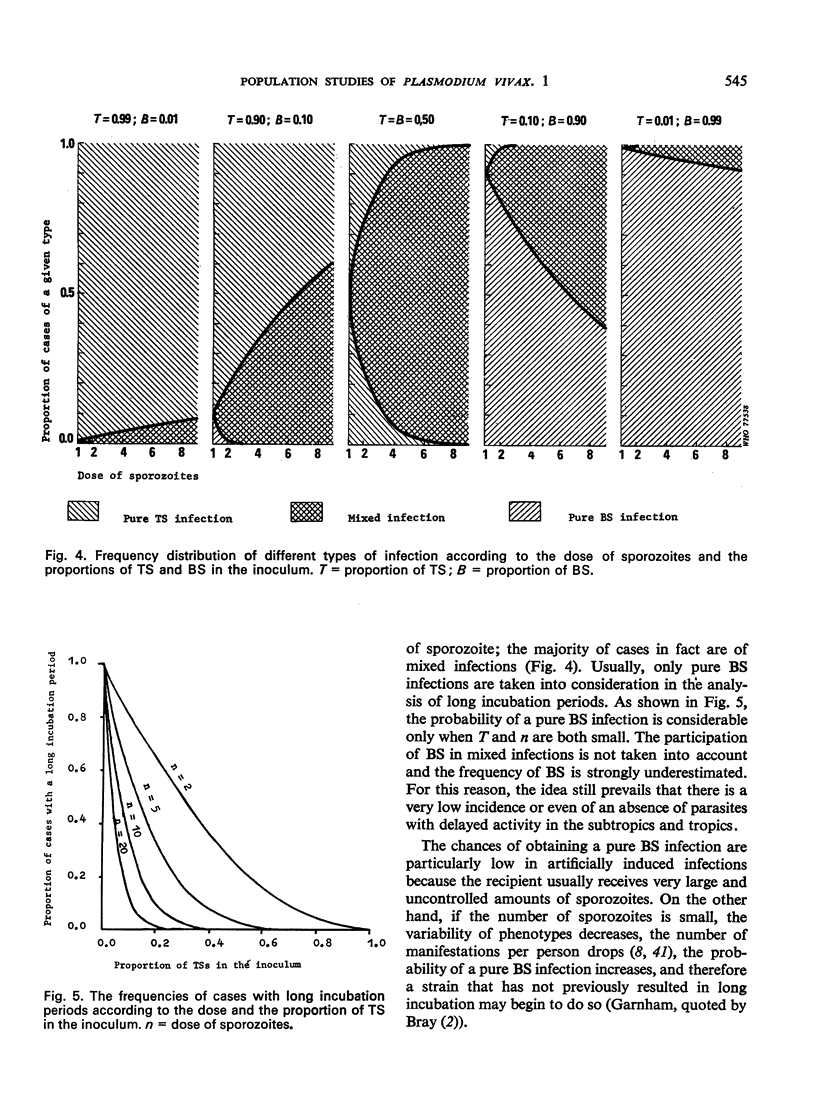

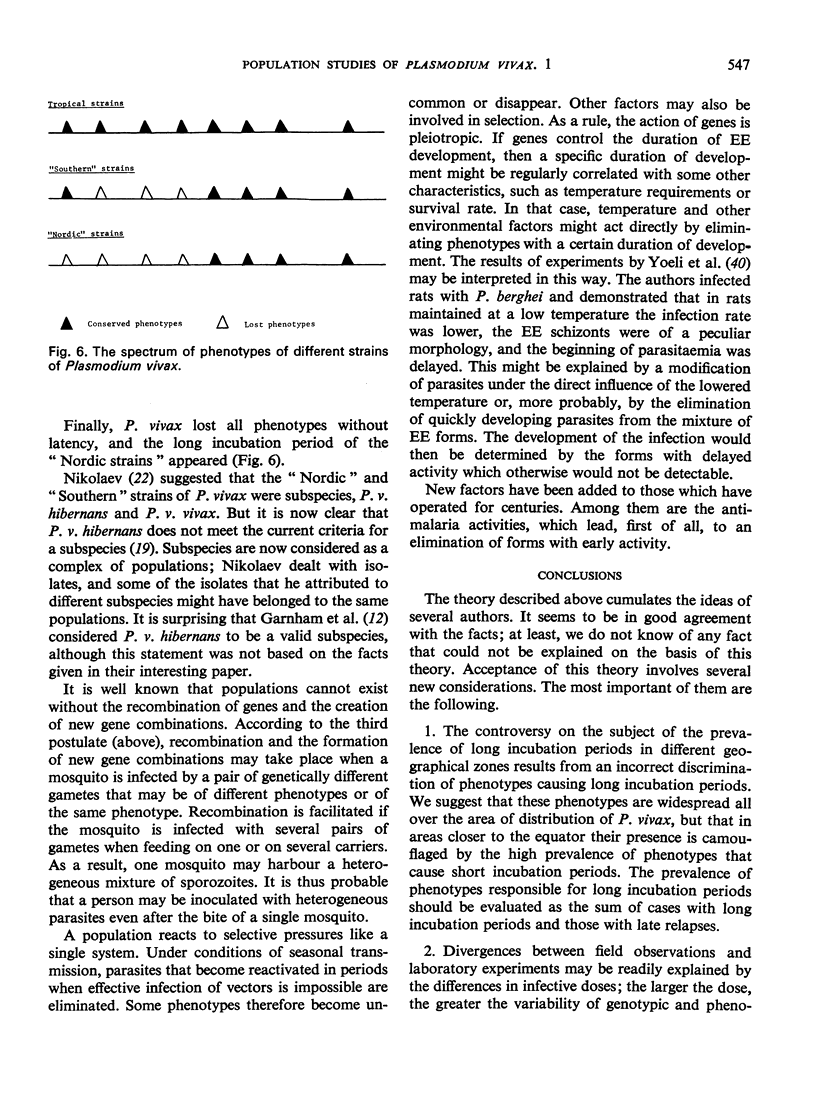
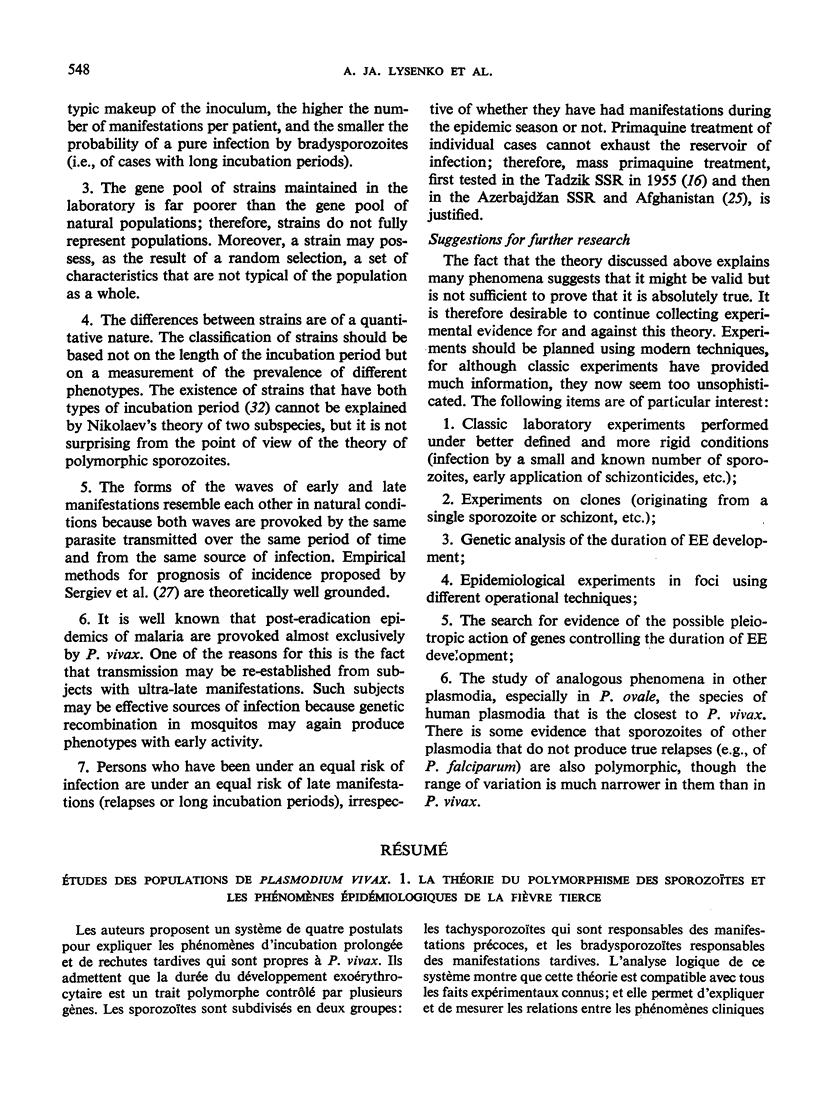
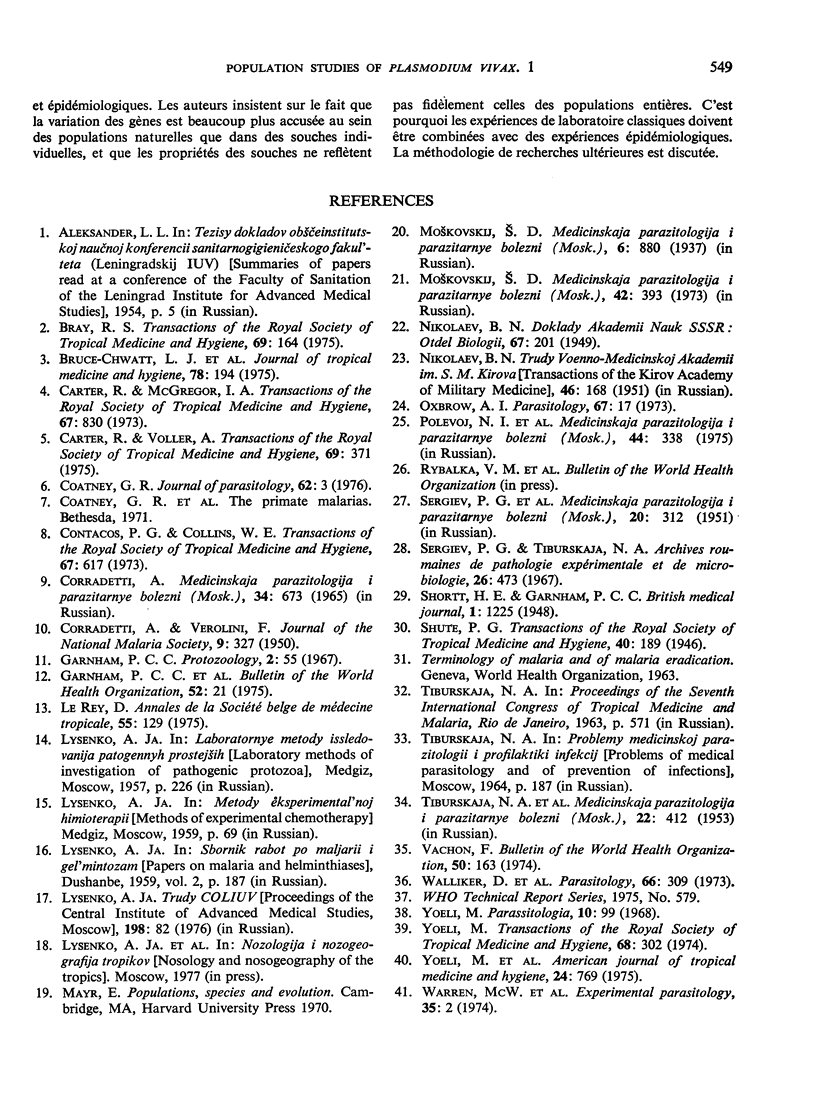
Selected References
These references are in PubMed. This may not be the complete list of references from this article.
- Bruce-Chwatt L. J., Draper C. C., Avramidis D., Kazandzoglou O. Sero-epidemiological surveillance of disappearing malaria in Greece. J Trop Med Hyg. 1975 Sep;78(9):194–200. [PubMed] [Google Scholar]
- CORRADETTI A., VEROLINI F. Studies on relapses in blood-induced infections from Plasmodium malariae and Plasmodium cynomolgi. J Natl Malar Soc. 1950 Dec;9(4):327–331. [PubMed] [Google Scholar]
- Carter R., Voller A. The distribution of enzyme variation in populations of Plasmodium falciparum in Africa. Trans R Soc Trop Med Hyg. 1975;69(4):371–376. doi: 10.1016/0035-9203(75)90191-1. [DOI] [PubMed] [Google Scholar]
- SHORTT H. E., GARNHAM P. C. C. Demonstration of a persisting exo-erythrocytic cycle in Plasmodium cynomolgi and its bearing on the production of relapses. Br Med J. 1948 Jun 26;1(4564):1225–1228. doi: 10.1136/bmj.1.4564.1225. [DOI] [PMC free article] [PubMed] [Google Scholar]
- Walliker D., Carter R., Morgan S. Genetic recombination in Plasmodium berghei. Parasitology. 1973 Apr;66(2):309–320. doi: 10.1017/s0031182000045248. [DOI] [PubMed] [Google Scholar]


